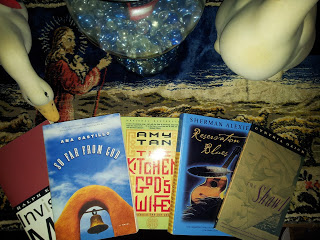I don’t really like writing papers all too
much. I’m not that much of a fan of the procedures
and technical structures (I may actually be lying because I love learning about writing). Maybe if the
subject matter is fun then
my efforts in writing a good paper would be stronger. Should I be allowed to just
write what I think, it would not be so bad of a process. However, even just writing your thoughts about a subject requires some level of research. So I suppose you can't escape needing supportive material to back your claims/ideas.
School is starting next
week for many, and since this blog touches a little on writing, I wanted to
share a part of my process of researching for a paper. At least for me these ideas alleviated the anxiety I used to face with a paper approaching its due date.
But first… if you have a
paper to write, don’t wait until the night before it’s due to write it...
Working on a paper, I make
sure that I am clear
about the source material I am working around. This way I know specifically what I
am searching for. Once I wrote a paper
on Foe, by J. M. Coetzee. Of course that book is teeming with subjects worth exploring. Therefore, I had to be
specific about what I wanted to propose in my paper, unless asked otherwise by my instructor. Usually that involves completing and
understanding the source material (Foe) to
the best of my abilities first. Then I can create and focus specifically on the areas I want to draw
my thesis statement from (“Interracial Dating and Feminism in Foe”).
I keep notes of the material I want to use from the source (quotes,
etc.), dividing each branching related subject to be disturbed throughout the paper to support my
thesis. Examples would be character
studies for Susan and Friday, race relations, sexism, and so forth.
Now I have a clear list of focus topics related to the novel that I've gathered to support my thesis.
Now I have a clear list of focus topics related to the novel that I've gathered to support my thesis.
From here I do a general search on the areas I want to cover in the paper so that I can define them clearly. I ask myself “what are feminism, sexism, and race relations?” Once I have the basic definitions of
what I want to put in the paper, I start my other search for readers' feedback. I start with Google because I want to find
other readers' point of view and reviews on the material I will be writing
about. If I find something useful I save
it to help craft the tone of my own paper. Or, unless it is scholarly or peer
reviewed, I hold on to it as “focus” material (meant to keep me on track) never to be used or quoted in the paper.
When I have a clear definition
of the issues I
will
use to support my thesis, I then
move into searching for scholarly sources that relate both the issues (sexism,
race, etc.) with the source material (Foe). So if I want to find feminism presented in Foe, I will use search engines such as
Google Scholar, Project MUSE, or JSTOR, to find online journals and articles
that will be useful as scholarly references.
I further search through something that is called the ISI Web of Knowledge,
which links source materials. Most of
these search engines are provided exclusively through schools or by other means. Nevertheless, this is mainly how I conduct
online research, particularly when it comes to writing papers.
So...
1. Understand my source material first -- Foe
2. Develop my thesis and name my topics
3. Define my topics
4. Review readers' feedback on the source and my topics to shape the tone of the paper
5. Nail and support my research with peer reviews and scholarly sources
Hope this helps you like it used to help me. Like anything in life, it's just a matter of breaking things down into smaller bites.
So...
1. Understand my source material first -- Foe
2. Develop my thesis and name my topics
3. Define my topics
4. Review readers' feedback on the source and my topics to shape the tone of the paper
5. Nail and support my research with peer reviews and scholarly sources
Hope this helps you like it used to help me. Like anything in life, it's just a matter of breaking things down into smaller bites.







